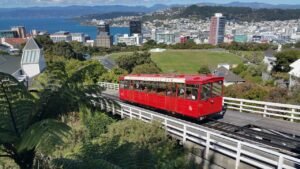
Urban Green Spaces: Creating Sustainable and Accessible Parks for Communities
Last Updated 18 May 2024 |Tania Tanjim
Urban green spaces are very important in today’s cities with many buildings. These green havens give comfort from city noise, thereby becoming necessary for both human beings and nature. The more crowded our cities become, the more critical is our need for suitable, long-term and reachable public parks. This article will discuss the importance of green urban areas – how they promote good relationships among neighbors in addition to some ways on how to come up with eco-friendly public spaces.
The Importance of Urban Green Spaces:
Urban green spaces which refer to parks, gardens, as well as public squares are responsible for a range of activities aimed at improving the standards of living in our cities. They are essential for cities as they help in reducing the levels of carbon dioxide evident mostly in industrialized cities and act as air purifiers as well absorbing carbon dioxide. On the other hand, green areas are recognised for their role in conserving diversity by acting as habitats for both plants and animals within urban areas.
Apart from being good to nature, urban areas that are green give great social and psychological gains. This association improves mental health. Besides it lowers stress and enhances general well-being. Plus, parks act as common places where groups of people can meet and have fun together thereby improving interaction among them as well as offering sporting facilities or recreation centres alongside cultural exchanges such as music festivals etcetera. Additionally, green spaces play their part in financial Neighbourhoods flourishing through increase property prices as well as pulling companies.
Challenges in Urban Park Design:
In dense urban areas with little available land,|| the design.| hinders efforts to construct and conserve parks| by urbanization and competing land uses as well as restricted budgets ||Designing and keeping urban green spaces present certain challenges that are different than other types of spaces. Additionally, Inequities in green space access remain, with minority individuals often having fewer options for where they can play or relax.
Furthermore, because these parks are necessary in city areas it is equally important to make sure they are eco-friendly. It should be noted that the common park design elements including vast spaces of lawn composed of non-native plants and water-intensive gardens put a lot of pressure on the ecosystem. The contribution of global warming should not be underestimated especially when it comes to the aspect of parks in cities since excessive rains lead to flooding while extreme droughts make trees and grass dry up thus dying.
| Urban green spaces|
Strategies for Creating Sustainable and Accessible Parks:
Coming up with progressive methods that give priority on two important things such as ecological balance and favoritism is key to solving the intricate issues found in urban park design. Here are some ways through which this can be facilitated by creating urban parks that cater for both the human population and the earth.
| Urban green spaces |
Community Engagement:
The planning and design process by involving local residents in order to ensure that parks mirror the needs and preferences of diverse communities. Community input is important because it can assist in ascertaining most wanted amenities, dealing with safety worries and building a feeling of ownership that is sensed as stewardship.
Multi-Functional Design:
How can we maximize the use of the small area we have? One idea would be to create parks with many roles. Among the ways that can be used to manage stormwater runoff, improve water quality, as well as increase biodiversity are having rain gardens, permeable pavement and green roofs. Integration of fitness stations, playgrounds and cultural zones will ensure that there is something for everyone in the recreational facilities available.
| Urban green spaces |
Native Landscaping:
To save water, reduce maintenance needs and help local ecosystems, use local species of plants in the landscaping of the park. Native plants are known after years that they are resistant to droughts, pests, diseases due to local climate and soil characteristics.
Green Infrastructure:
To enhance ecosystem services and lessen the urban heat island effect, merge the various park seeds like bioswales, vegetated swales or urban forests that contain green infrastructure elements. Wildlife benefit forage while green infrastructure enhances water retention, lowers flooding risks and enhances air standards in addition to serving as habitat for wildlife.
Universal Design:
Incorporate universal design principles to create barrier-free environments that accommodate individuals with diverse mobility needs, including people with disabilities, old people, and children. Signs and sitting places should also be provided at intervals.
Sustainable Management Practices:
You should use environment-friendly landscaping such as organic method, integrated pest control and water-efficient irrigation systems for sustainable management to cut down on operational costs as well as environmental damage. Install solar panels or wind turbines in parks so as to utilize clean power technologies.
Inclusion Cities can construct lively parks that facilitate connectivity and leisure for city residents and visitors by taking risks involved in unique design strategies with other people. This is because urban nature preserves serve to complement the urban structure, hence making sustainable the environment, social justice, and happiness of the entire neighborhood. It is essential for us to invest in sustainable parks that are accessible in order to build resilient, livable cities for future generations.




